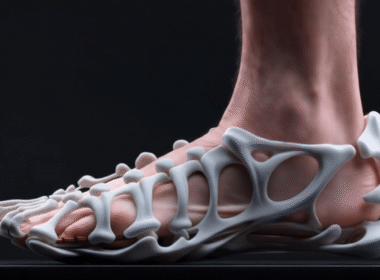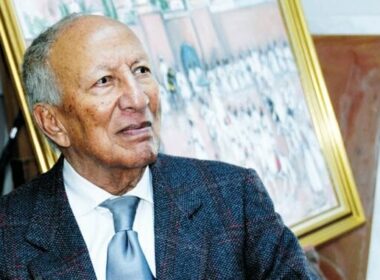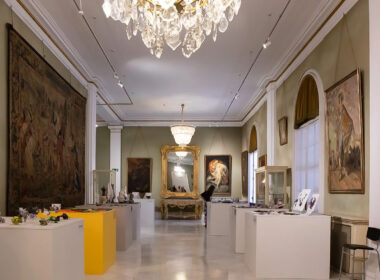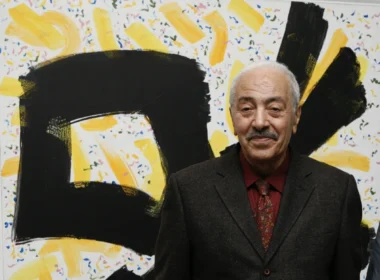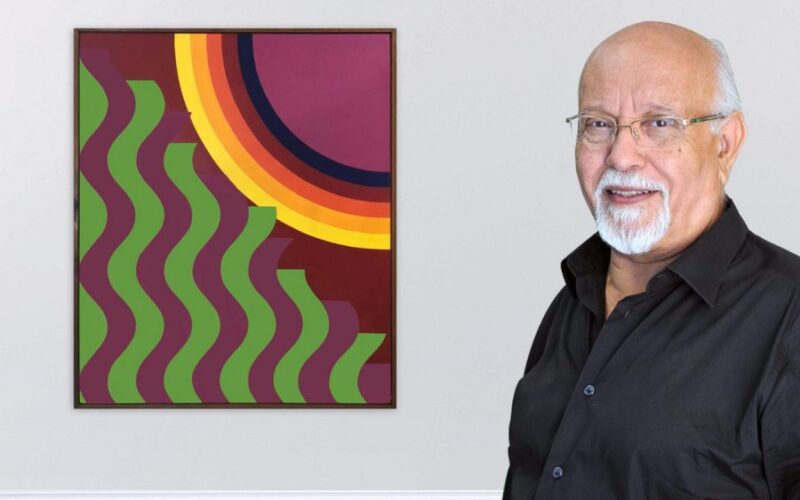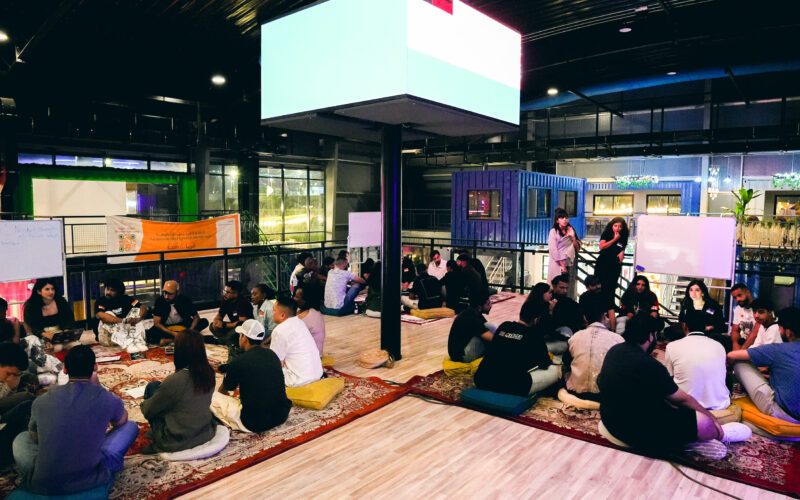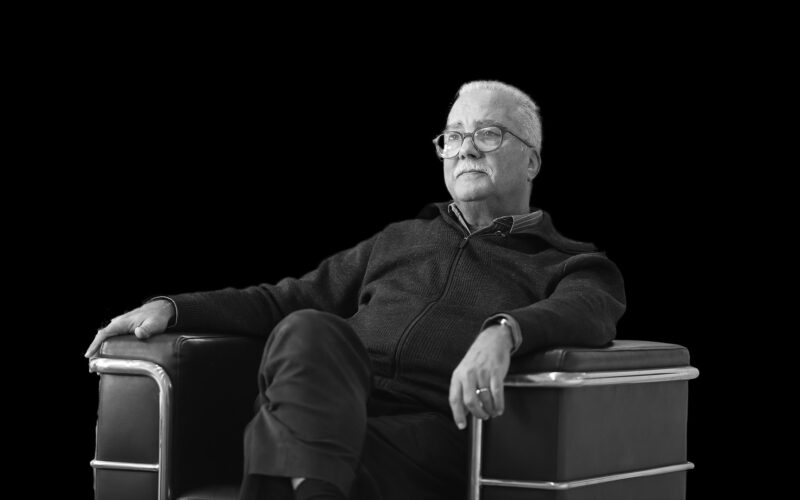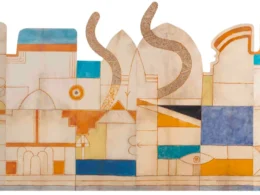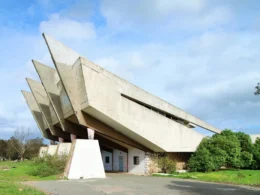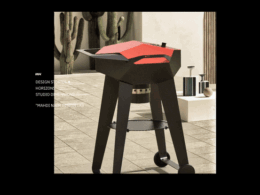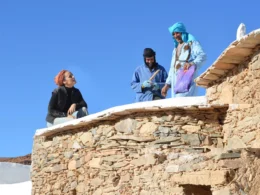Mohamed Melehi (born 12 November 1936, Asilah, Morocco; died 28 October 2020, Boulogne‑Billancourt, France) was a visionary painter, designer, educator, and cultural activist whose bold abstractions helped define post‑colonial Moroccan modernism.
Table of Contents
Mohamed Melehi’s Early Formation & International Trajectory
- Trained initially at the École des Beaux‑Arts in Tétouan (1953–1955), Melehi continued his studies in Seville (1955), Madrid (1956), Rome (1957–1961), and Paris, engaging deeply with European avant‑garde movements and materials.
- In Rome, Topazia Alliata staged four solo exhibitions for him between 1959 and 1963, introducing him to leading abstract artists and connecting him to influential critics.
- Awarded a Rockefeller Foundation fellowship, he studied at Columbia University (1962–1964), shared a studio building with Jim Dine, and encountered Frank Stella and other prominent Minimalist and Hard–Edge painters, which inspired a shift toward vivid, hard‑edged colour.
Mohamed Melehi’s Return to Morocco & the Casablanca School
- Melehi returned in 1964 to teach painting, sculpture, and photography at the Casablanca School of Fine Arts under Farid Belkahia’s directorship.
- Alongside Belkahia and Mohamed Chabâa, he formed the core of the Casablanca School, a collective that sought to merge Moroccan cultural traditions with modernist aesthetics and to reform art education in a postcolonial context.
Artistic Presence:
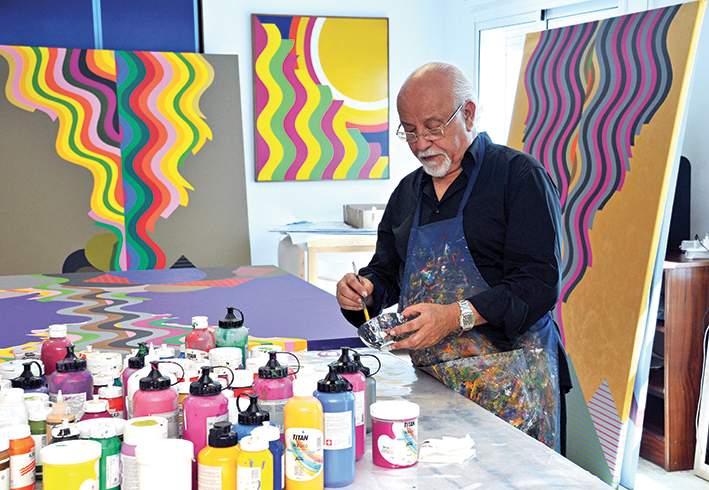
Art as Protest
- In 1969, Melehi and colleagues organised Présence Plastique, an outdoor exhibition in Jemaa el‑Fna, Marrakech. Works were displayed on public walls for several days, exposed to the elements as a political and aesthetic statement challenging institutional norms.
- “Our works were in Jemaa el‑Fna square for a week, exposed to the sun and wind. It was an ideological message about what art could be,” Melehi explained.
Waves, Colour & Materials: His Signature Language
- From the 1970s onwards, Melehi developed his iconic wave motif, hard‑edge, flat bands of colour inspired by Asilah’s seascape, Arabic calligraphy, and Berber geometric traditions.
- He often painted with cellulose or automobile lacquer on wood panels, embracing industrial materials to align art with popular culture, explicitly stating this medium choice was “in solidarity” with working‑class communities.
- Variants of these waves, vertical, flame‑like forms, appeared in works like Flamme (1975) and in graphic designs for causes such as Palestine, featured in the journal Souffles.
Cultural Organising & Publications
- Co‑founded and served as art director of Souffles (1966–1969), a radical platform blending art, literature, and political critique across the Maghreb and Arab world.
- In 1971, Melehi launched and directed Intégral until 1977, a French‑language artistic‑literary review that fostered cultural discourse across North Africa, in collaboration with Mustapha Nissaboury and Tahar Ben Jelloun.
- In 1974, he established SHOOF, a design studio and publishing house, which became instrumental in graphic design and visual activism.
Asilah Festival & Institutional Roles
- In 1978, Melehi and Mohamed Benaïssa created the Al Mohit Cultural Association and launched the International Cultural Moussem of Asilah, an arts festival featuring large-scale mural painting and performances that continue annually and have transformed the city’s aesthetic landscape.
- He served as Arts Director at Morocco’s Ministry of Culture (1985–1992) and later as Cultural Consultant to the Ministry of Foreign Affairs (1999–2002).
Exhibitions & Legacy
- Solo exhibitions included early shows from the late 1950s (Tangier, Rome), major retrospectives such as Recent Paintings at the Bronx Museum of the Arts (1984–85), and survey exhibitions including New Waves: Mohamed Melehi and the Casablanca Art School at The Mosaic Rooms (2019) and MACAAL in Marrakech.
- His works have entered the collections of major institutions: Centre Pompidou, MoMA, Tate Modern, Institut du Monde Arabe (Paris), and Mathaf in Doha.
Final Brushstroke
Mohamed Melehi passed away on 28 October 2020, aged 84, in Boulogne‑Billancourt, France, from complications related to COVID‑19. His aesthetic, marked by colourful waves, geometric rigour, and democratic, public-facing art, remains a cornerstone of Moroccan modernism and continues to inspire generations across North Africa and the broader decolonial art world.
Why It Matters for Today’s Readers
Melehi’s practice offers a compelling example of how modernist abstraction can be rooted in local culture, public space, and civic activism. While rooted in the global dialogues of mid‑20th‑century art, his work remains deeply Moroccan, bringing art back into everyday life and asserting cultural identity through colour, form, and engagement.
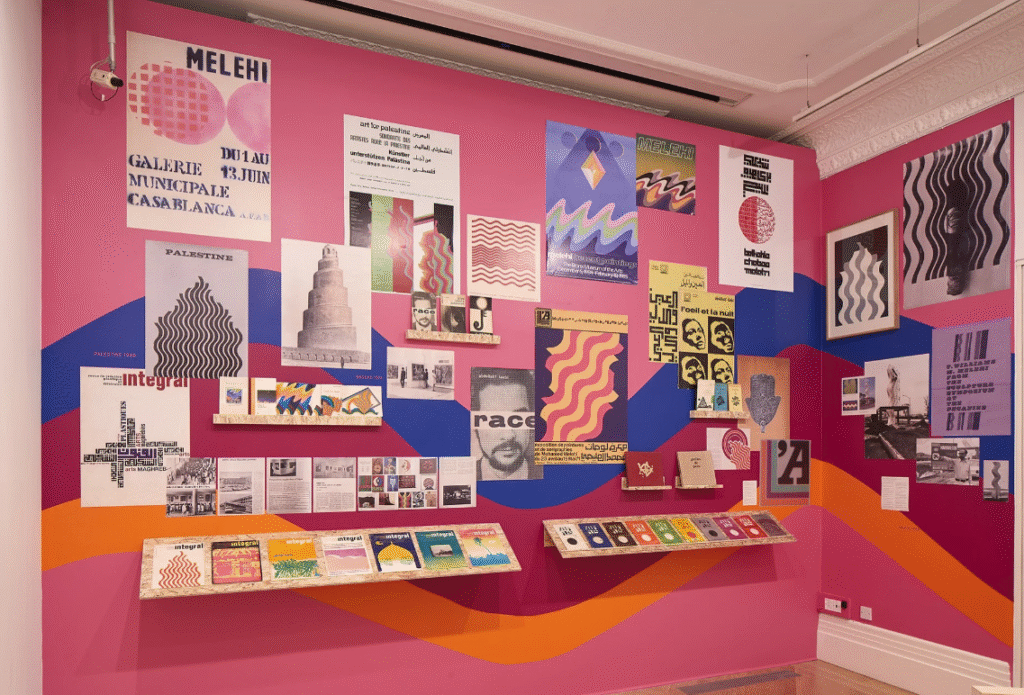
Timeline:
- 1936: Born in Asilah
- 1962: New York, Rockefeller fellowship
- 1969: Présence Plastique in Jemaâ el‑Fna
- 1978: Launch of Asilah Festival
- 1985–1992: Arts Director, Ministry of Culture
“He painted with cellulose in solidarity with working‑class communities.”


